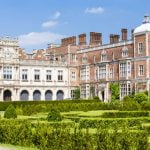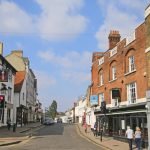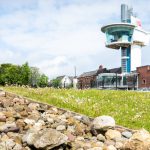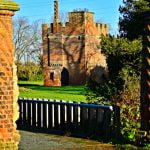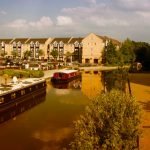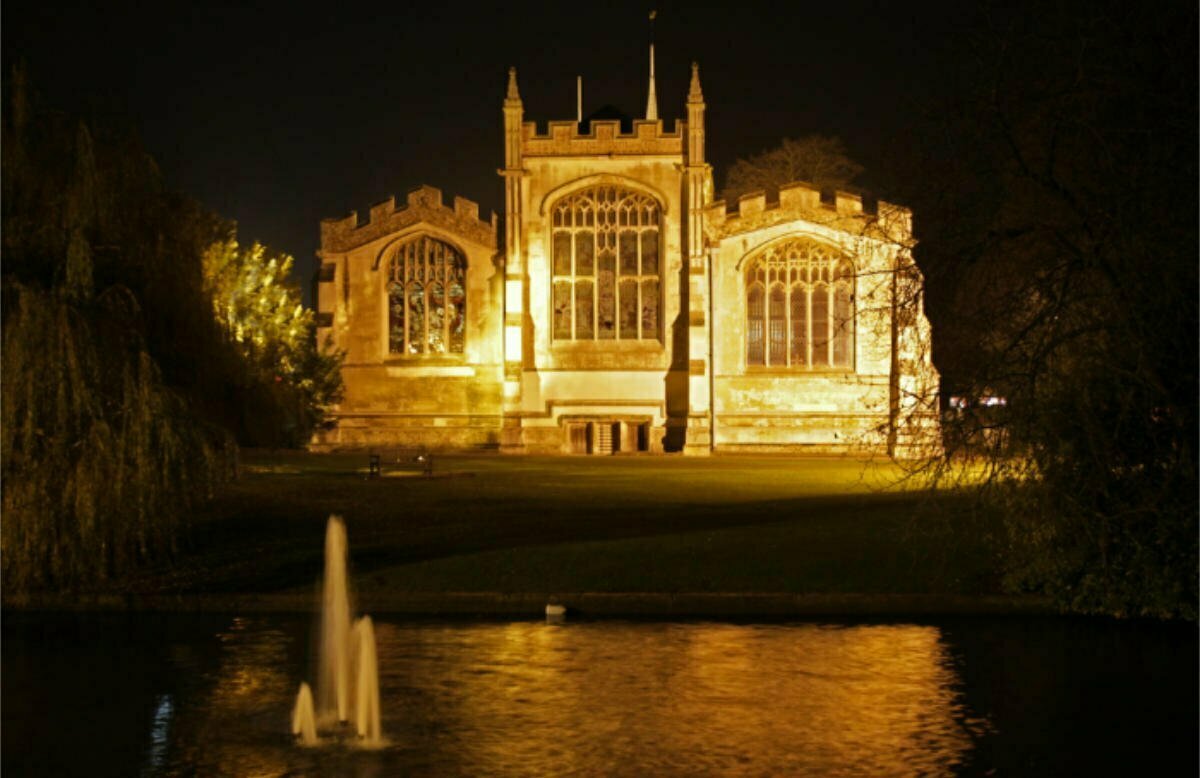
Hitchin The North Hertfordshire town that used to be home to a tribe of Hicces.
Hitchin is a thriving town situated in the north Hertfordshire region. It takes its name from the tribe that once occupied the land. We can trace its roots as far back as the 6th century – but we haven’t even scratched the surface yet. As ever, we want to read about the fascinating history of the town before we move on to the famous people, fun facts, and the best things to see and do there.
Does Hitchin make a good place for a day trip? Let’s find out as we embark on another Five Minutes Spare travel guide of the towns of England.
The Early Days of Hitchin
We know that natives named the town for the nearby river and the settlement that grew around it in Anglo-Saxon times. Before this, though, Hitchin played home to a Roman villa. At least one Roman family passed through the countryside here and decided it was so beautiful that they would stay. A 2021 field expedition saw more than 50 locals turn out to comb a field on the outskirts of town to look for artefacts. Archaeologists believe that the villa lies underneath the field.
The town is slightly to the south of the Icknield Way that the Romans built, which heads north. It would have been a rest stop, with an inn or at least stables. Romans kept horses all over the country at strategic points so that they could effectively communicate messages back to Rome quickly. Evidence of a bathhouse here suggests that the town was of mild importance. There is even a named Roman Villain to the north of Ninesprings, just outside of town. It is known as Wymondley Roman Villa.
After the Romans retreated across the sea, some of them stayed behind to mingle with the local tribes. In this Angle and Saxon period, the Hicce tribe grew in importance. The Hicce took their names from the river Hiz, where the ‘iz’ is pronounced ‘itch.’ This is when Hitchin eventually took its name. The Hicce date from 658 onwards, up until after Danelaw began. The town sits on the edge of the Mercian kingdom to the north and the Saxon lands to the east. In those years, it was a treacherous place to live. A border town where both sides traded and skirmishes were frequent.
In the late 700s, King Offa had a Benedictine house built in the area. By the time of the Domesday Book, Hitchin was already extremely important. So much so, that the book famously recorded that the king himself held the royal estate here. From the 1100s onwards, kings liked to grant town charters to allow the towns things like lighting, paving, street cleaning, and holding markets. Hitchin has no market charter, proving that it was a large town before the 1100s.
Hitchin appears in the Domesday Book as one of the largest 20% of settlements in England at the time. It had over 103 households and belonged to the king. It had an annual of 116 pounds. Hitchin had a number of impressive resources, including:
- 45 villagers, 29 cottagers, and 12 slaves
- 17 smallholders with 38 ploughlands.
- There were 7 lord’s plough teams with one more available, then a further 22 men’s plough teams.
- He had 4.25 meadowlands, woodland that contained 600 pigs, and 2.5 lord’s lands
- 4 mills
- 1 church
So King William was an extraordinarily rich man indeed. You can find the Open Domesday book entry and have a look for yourself.
The Medieval Era in Hitchin
After the doomsday survey took place and King William’s successor took the throne, the lands of Hitchin were transferred to the Baliol’s. They were the eventual kings of Scotland; such was their power. Hitchin became their seat near the English courts, which was strategically important.
Hitchin grew in wealth under this family, with St Mary’s church erected in the 12th century. Later, Hitchin Priory opened in 1317. In 1361 it became a Gilbertine Monastery. In that same century, the Black Death came to England. Historians and parish records estimate a full half of the town died.
By the 1600s, the town was a brewing town where locals made ales. Local countryside produced pleasant wares and even vineyards. Queen Elizabeth I espoused the use of home vineyards in England. In the 1500s, King Henry VIII would dissolve the monasteries and the priory here would close.
Let us take a break from the history for a moment and learn some trivia about Hitchin. We can always return to it, later.
Fun Facts about Hitchin, North Hertfordshire
At this point in the tour guide, we like to reflect on some of the light-hearted trivia we dig up. Here are some of the best facts about Hitchin that arose during our research. Feel free to let us know on Facebook if we missed any.
Fun Trivia about Hitchin:
- An annual festival makes this town stand out among its neighbours. Hitchin has an annual July festival with over 100 events that celebrate the town’s culture, history and arts. Covid might have slowed it but it will be back.
- The Queen visited Hitchin on her Jubilee tour back in 2012.
- Hitchin was the first town to introduce the weekly emptying of black bins in their town. It started in the 60s and now we all have a black rubbish bin.
- Since the 1500s, you can see the town’s biggest tourist attraction in the summer months. The fields outside of town grow thick with lavender a crop planted hundreds of years ago. If you are allergic to Lavender, this isn’t the town for you.
- St Mary’s Church, native to Hitchin, is the largest church in Hertfordshire. It is an astonishing building that makes an excellent place for some IG photos.
It’s always delightful to learn something new about the places we review. Let’s get back to the history behind the town of Hitchin so we can speed onwards and upwards towards the attractions it contains.
Industrial History of Hitchin
Let’s return to the industrial period in Hitchin to get back on track with history. In the 17oos, a man named George Chapman became friends with a man named William Shakespeare, so Hitchin Hill made an appearance in some of the bard’s works. Francis Bacon and Shakespeare both stayed in town with their friend. Bacon translated some of Homer’s Iliad on Hitchin Hill.
During the English Civil War, the town sided with the Parliamentarians. History records that it was the second biggest town in the county during that period. Over the next hundred years, the town changed from wooden to brick. Iron founding became a popular profession in the industrial era, with iron shipped in from the north and west. Local businesses made farm equipment and later machinery. In 1810 local philanthropists created a foundation here for British schools of the future.
Between 1801 and 1851, the population increased from 3 to 7 thousand people. Overcrowding, dirty streets, lack of sewerage systems and dirty water all caused outbreaks of many epidemics. The town remained in its medieval format right up until the turn of the century.
The railway arrived in Hitchin in 1850, only a few short years after its arrival in the southeast of England. A corn exchange opened shortly afterwards and it tended the people for over 200 years. In 1837 the Lancasterian Schoolroom opened to teach boys peer tutoring. This exists as a museum today. Later, in 1869, Girton College opened to tend to the women of Hitchin. The college exists in Cambridge now, but it started here, in Hitchin, which is the birthplace of the modern school system.
Modern Day North Hertfordshire
After the industrial period, Hitchin entered the 20th century with some modern conveniences. The gas streetlights would be newly electric. Buses replaced electric trams. The 19th century had brought piped water, fresh industry, and mills for workers to spin fabric. It was an industrious town where wealthy landowners from London could retire to the country for the weekend. It escaped the worst of them since it was not on the coast.
Hitchin played a role in WWI and WWII. The names are in the national Roll of Honour and there is a WWI and WWII cross in town as a memorial. There are 365 names in total from both wars on the roll of honour although not all made it onto the local memorial plaques. You can read the full entry, here.
The town had the market preserved in the 1920s, with nearby Letchworth opening in 1910 as the first Garden City. In recent years the town tannery closed, the breweries moved on, and the local populace returned from thriving industry to the pre-industrial years’ of practising rural growth and enjoying the fruits of the land.
In 2013 a Times newspaper poll voted Hitchin the 9th best place to live in the UK. The Romans thought it was a good place too, all those centuries ago, proving that not much has changed. It was never over industrialised, it never suffered the poisons from the chemicals as places in the north did and, since it belonged to King William, no Normans built any castles to control the populace with.
Modern Hitchin is about 30,000 people strong. It’s grown, but it never grew wildly or out of hand. IT has always been a favoured place to live by those in the south of the country, and even functions as a quiet little commuter town for wealthy Londoners. It’s still famous for its lavender fields even after 500 years. That’s a special achievement all on its own. It’s worth the visit in summer just to see those purple fields.
Famous People from Hitchin
In this section of the article, we devote some time to finding out who you might meet down the local boozer. Here are the most famous names we could find that have come from Hitchin:
- West Ham United and Arsenal midfielder Jack Wilshere is a Hitchin man.
- Several other footballers, including Drewe Broughton, Chris Cleaver, Ross Flitney, Karl Duguid, and even Spanish football journalist Guillem Balague lived here for a while.
- Monica Dickens, writer, Charles Dickens’ granddaughter.
- George Chapman, the poet
- Kane Kramer, who invented the digital audio player.
- Sally Biddulph, journalist and presenter.
- The golfer Ian Poulter
And many, many more. Now that we know who we could bump into in the street, let’s talk about those attractions. There’re a few great things to see and do in Hitchin. Here are some of our favourites.
Things to Do in Hitchin
Some of the best attractions in the Hitchin area are listed below. Try to see them all before you leave or visit more than once to collect them like Pokémon.
Historic Sites and Landmarks
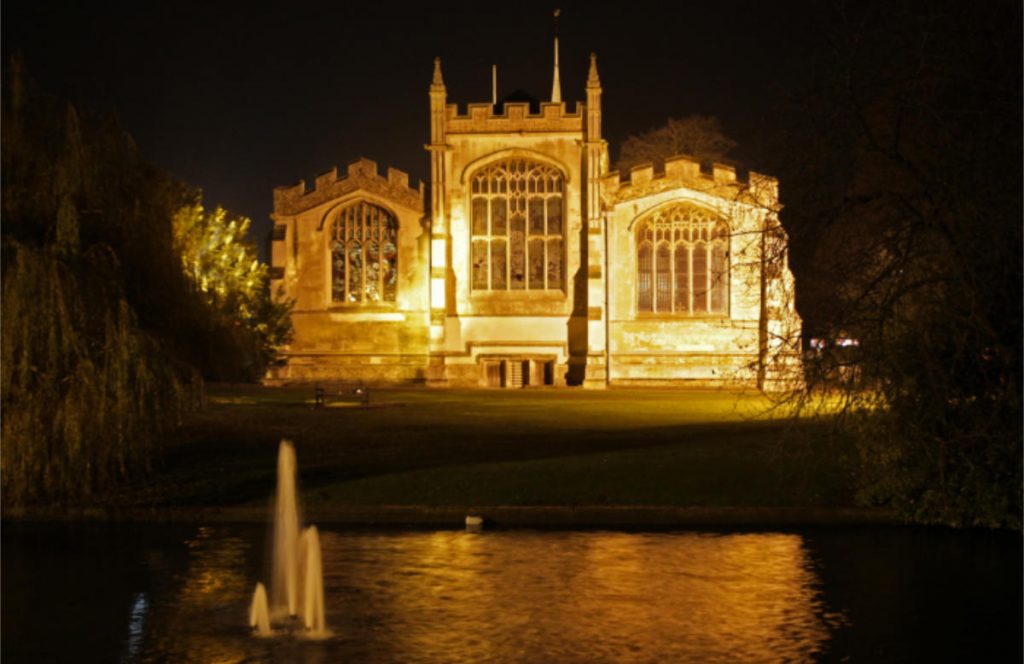
Image Wirestock Creators/Shutterstock.com
We mentioned St Mary’s Church before but it is worth reiterating. This is a beautiful old building, first erected in the 12th century and still going strong. It has beautiful old stained glass windows, a wonderful tower, and its built-in sandstone colour that makes it different to the grey churches of the north. It’s a local landmark you can spot from anywhere in town. You don’t have to be religious to walk around its ancient graveyard or enjoy the architecture. It is still a functioning church though so if there’s a wedding or a funeral on it might be best not to hang around too long.
Part local landmark and part outdoor attraction, locals love to spend time on the 50 acres long garden at St Paul’s Walden Bury. This stretch of the outdoor garden has long vistas of grass leading up to an 18th century stately home. There are terraces of trees, hedgerows, and meadows to enjoy. Dogs are welcome if you keep them on a leash. This place lights up in summertime when the gardens fill with sunbathers. It is a gorgeous, landscaped garden that is well worth the visit. Remember to take your litter home.
Outdoor Attractions
Every year in the late spring and summer months, you can find the wildflower and sunflower fields outside of town. The fields are at Cadwell Farm on Arlesey Road. There are endless fields of lavender around the town which became popular in the 1500s due to its use in medications and sleeping aids. The Hitchin lavender fields are famous for miles around, making this a favourite destination on a Sunday afternoon in high summer.
Second, only to the flowers is the Stotfold Watermill and Nature Reserve. This beautiful conservation area consists of a working watermill and lovely, picturesque land. The nature reserve has sponsored the planting of hundreds of trees. There are hedgerows and wildflower meadows to play in. They welcome educational and group visits, and the three floors of the working watermill allow you to learn all about the tools that powered the industrial revolution. This is a historic nature reserve that is open daily but they do ask you to book in advance since they are not always open to the public. You can find out their next open day by checking their website in advance of your visit.
Galleries and Museums
Since Hitchin has done so much for the British school system and the advancement of female education in the 1800s, it’s only right that it is home to the British School Museum. There are other school museums around the country, but this is the only one housed in the town where the philanthropists laid down the foundations for modern schooling. Go along and learn about the old ways of schooling and how the system came together. They run a lot of group tours to schools and teachers. During summer holidays and off days they run groups to keep students busy while their parents work. Craft days are not an uncommon sight here.
Although not technically a gallery or a museum, you ought to stop by and see what is on at the local theatre here. The theatre in Hitchin is called the Factory Playhouse and it is big enough to put on some awesome shows. It is a 200 seater theatre that shows local events, live shows, hosts bands and allows the locals to get involved in productions of their own making. It’s everything you would expect from a local theatre and just as dramatic as you’d like.
In a weird twist of rivalry, there is a second theatre in town competing for your attention. The Market Theatre plays pantos and serious matinees all year round. They have a weekly panto, though they’re not as big or brassy as the Factory is. You can check here to find out what’s going on but they don’t have a full website page of their own. Good on them. We thought the days of the competitive theatre were over.
The North Hertfordshire Museum is in Hitchin. It comes with its own fabulous little café which visitors love. It has the history of the parish and all the other little artefacts and interesting titbits you might want to know about Hitchin in it. Pay them a visit to learn more. They have an art space here, too, which functions as a gallery area.
Sports and Recreation
Because it’s an English town, there are several golf clubs for you to choose from in Hitchin. Head north to the Letchworth Golf Club, the newest of all the local clubs. You can head east out the Custom Lab golf course, or west to the Chesfield Downs club. Either way, you are never far from a course or a driving range.
Hitchin has its own football club, again, name an English town that doesn’t. Hitchin Town FC plays in the Southern League Premier Division Central band and their stadium is at Top Field, in Hitchin. It has a capacity of 4,554, so you can catch a match at a weekend if you want to. Take your umbrella, it’s only partially covered. Their nicknames are the Canaries because of the yellow they wear… not because they go down the mines to make sure the air is breathable.
Shopping and Retail
The best shopping in Hitchin is towards the town centre, which still has the air of a medieval-style street. There are several supermarkets and a few small gift stores that should sell you presents to take home for your loved ones.
Other Notable Nearby Attractions
Don’t fret if you have ticked off everything on our list so far, those were just the cream of the crop. There are plenty of other things you can see and do in the area, including:
- Letchworth Garden City is nearby and has some exciting attractions of its own.
- Check out the Arkley Fine Art gallery, we couldn’t fit it in in the galleries and museums column but it truly is the best place in town to buy artworks.
- Thought Hitchin had enough theatres? So did we. There’s a third. Check out the Queen Mother Theatre which, we admit, sounds like a hospital wing instead of somewhere you would catch a show.
- There is the Purwell Meadows Nature Reserve to hike around
- Take a pottery class at Clay with Carole. Book in advance to ensure she can slot you in.
And so much more! Get stuck into Hitchin for yourself and explore.
How to get to Hitchin?
Now you have caught up with us on all we know about this quaint Hertfordshire town. We can give you rough directions on how to get there but our advice would be that you download a map for the journey. Goldfish have better direction sense than we do.
By Road
Follow the A1 (M1) out of London to the north.
By Rail
Hitchin railway station is your target.
By Air
The nearest airport is London Luton.
By Sea
There isn’t any sea access.
Got Five Minutes?
If you liked this article and you must have more, you could find plenty of other travel guides over on our webpage. You might even spot your home town among the masses. Anything’s possible when you have 5 minutes spare. If you use them productively.
